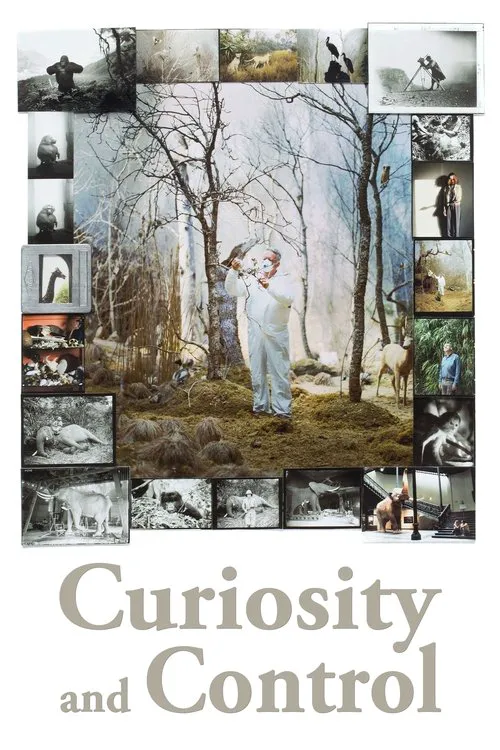Curiosity and Control

Plot
Curiosity and Control is a thought-provoking documentary that delves into the intricate dynamics between humans and nature. Through a layered exploration of the world of natural history museums and zoological gardens, the film invites the audience to question the ways in which we perceive and interact with the natural world. By bringing together the perspectives of historians, authors, architects, and zoo managers, the documentary presents a nuanced tapestry of ideas that challenge our understanding of the human relationship with nature. At the heart of the film lies a paradox that is both fascinating and disturbing. On one hand, humans have an innate curiosity about the natural world, a desire to learn about and understand the intricate web of life. This curiosity drives us to build grand museums, such as the American Museum of Natural History in New York, where we can marvel at dinosaur fossils, giant squid, and other wonders of the natural world. These institutions serve as sanctuaries for our collective curiosity, providing a safe space for us to explore and learn about the world around us. On the other hand, our relationship with nature is marked by a contradictory impulse – the need to control what we fear may be lost. We build cages and enclosures to protect and conserve the very creatures we admire, while simultaneously subjecting them to a life of captivity. This dichotomy raises fundamental questions about our values and our place in the natural world. Are we driven by a genuine desire to preserve and protect, or are we simply trying to exert power over a realm that is beyond our control? One of the most striking aspects of Curiosity and Control is the historical perspective it offers. The film takes us on a tour of the early days of natural history museums, where the focus was on collecting and classifying specimens as if they were mere objects. This approach, known as "comparative anatomy," sought to understand the natural world through the study of parts rather than the whole. The film shows how this approach shaped our understanding of the natural world, often leading to a reductionist view of living creatures that ignored their complexity and interconnectedness. As we move through the film, we meet a diverse cast of characters who share their insights on the natural history museum and the zoo. There's the historian who recalls the early days of the London Zoo, where animals were kept in cramped and unsanitary conditions. There's the author who writes about the "zoological sublime," the way in which the spectacle of wild animals in captivity can evoke feelings of awe and wonder. And there's the zoo manager who speaks about the challenges of balancing the need to protect and conserve with the need to provide a decent quality of life for the animals in our care. Throughout the film, these voices and perspectives come together to create a rich and nuanced exploration of the human relationship with nature. The documentary raises fundamental questions about our priorities and values, challenging us to think about the ways in which we perceive and interact with the natural world. As we delve deeper into the film, we begin to see that our fascination with nature is intertwined with a deeper desire for control – a desire to possess, to dominate, and to exert power over the world around us. One of the most striking examples of this dynamic is the way in which humans have sought to recreate the natural world in the confines of the zoo. From the elaborate enclosures that mimic the habitats of African savannas to the elaborate simulations of jungle environments, the zoo has become a place where we can experience the thrill of the wild without actually having to confront the dangers and uncertainties of the natural world. This impulse to control and dominate is reflected in the way we design our zoos, creating miniature ecosystems that are at once a reflection of and a departure from the natural world. As we reflect on the themes and ideas presented in Curiosity and Control, we are forced to confront the ways in which our relationship with nature is shaped by a complex interplay of emotions, desires, and values. We see ourselves as curious beings, driven by a desire to learn and understand the world around us. But we also see a darker impulse at work, a need to control and dominate what we fear may be lost. This paradox lies at the heart of the human relationship with nature, and it is this very paradox that Curiosity and Control explores with such depth and nuance. Ultimately, the documentary leaves us with a profound question: what does it mean to truly engage with the natural world? Is it enough to create elaborate enclosures and simulations, or must we find a way to genuinely connect with the world around us – to learn from it, to respect it, and to work alongside it? As we ponder this question, we are reminded of the words of the naturalist E.O. Wilson, who wrote: "The natural history of any species is its story of how it came to be, what it does, and how it ends up." In Curiosity and Control, we are given a powerful reminder of the importance of storytelling in our relationship with nature – a story that is still being written, and one that requires our active participation and engagement.
Reviews
Recommendations




